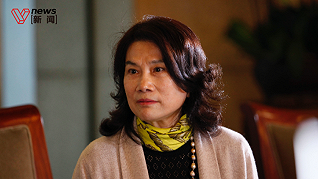深夜福利?_中國CHAIN同志GAY片國產_.手.動.輸.入.網.址.聯.系.客.服.人.員.lanan_shell
2A-26-30: Fire Detection and Warning System 1. General Description: The fire detection and warning system provides a means to detect and indicate the presence of an overheat or fire condition in the engine areas and APU enclosure. A dual channel system, it will remain functional should a single channel fail or one of its power sources be lost. The system receives power upon selection of the battery switches to ON. It will remain operable at all times provided the Essential DC bus is powered and all associated circuit breakers are closed. Prior to APU start, the APU fire detection system is tested by the flight crew. Likewise, prior to engine start, the engine fire detection system is also tested. Any failures or faults during engine portion of the fire detection system testing are annunciated. The fire detection and warning system remains active in sensing its respective areas during all phases of flight. The engine portion of the fire detection system continuously monitors self-health, annunciating any failures or faults. During shutdown, the fire detection and warning system remains operable until selection of the battery switches to OFF. 2. Description of Subsystems, Units and Components: A. Engine Fire Detection System: A dedicated continuous-wire fire detection system monitors engine fire zone temperature with two parallel dual loops. The parallel dual loops, LOOP A and LOOP B, which are approximately one inch apart, provide independent, yet related, fire detection. Each loop consists of three serieswired sensing elements that are attached to the lower side of the engine combustion area, forward fixed cowl and aft fixed cowl. Each engine’s two loops then connects to a digital engine fire detection control unit located in the tail compartment. In response to an engine fire, the fire detection control unit triggers the appropriate visual and aural warnings. If the detection system malfunctions, the control unit triggers the appropriate CAS message and illuminates the overhead panel fault lights. (1) Sensing Loop and Elements: The engine’s dual loops consist of two element assemblies parallelmounted to rigid stainless steel rails. Each rail conforms to the shape of the area for which fire detection is provided. Each loop consists of three series-wired sensing elements, commonly called firewire segments. A firewire consists of a thin stainless steel sheath containing a coaxial wire. The coaxial wire is insulated from the sheath by a semi-conductor material. Resistance of the semi-conductor varies proportionally with temperature, falling as sensor temperature increases. Simultaneously, capacitance of the sensor increases, providing a basis for logic discrimination between fire or fault. Both ends of each coaxial wire is connected to its respective portion of the fire detection control unit, while the sheath connects to the aircraft’s electrical ground. If either loop should fail or become shorted or fail for any reason, a fault alert illuminates. The flight crew may then select the faulty loop OPERATING MANUAL PRODUCTION AIRCRAFT SYSTEMS 2A-26-00 Page 7 January 31/02 Revision 6 off, leaving the remaining loop to function as a single loop system. Should a loop ever be severed, it will continue to operate normally, but will indicate as faulty during testing. (2) Fire Detection Control Unit (FDCU): The FDCU is a digital device that contains separate but identical circuit boards for the LOOP A and LOOP B fire detection loops. Each circuit board contains a voltage regulator, fire and fault warning logic circuits, fire and fault warning output circuits, a firewire driver and a fire warning comparator and reference selector. Supplied with 28 VDC power from the Essential DC bus through the L/R FIRE DET circuit breakers, the FDCU generates a 400 Hz squarewave that is supplied to the fire detection loops. The FDCU uses this squarewave output and the resulting feedback signal to provide fire and fault detection. (3) Test Control Panels: Two system test control panels are provided for the flight crew to verify proper system operation. They are located on the cockpit overhead panel and are labeled FIRE TEST (Figure 4) and FIRE DETECTION (Figure 5). With the Essential DC bus powered, testing of the system is possible. (4) Fire Annunciations: When exposed to high temperatures, (e.g., engine fire), semiconductor resistance drops and capacitance rises. If this occurs in both loops (except when a failed loop is isolated) and the changes are within the predetermined bounds as caused by heating of the www.aero.cn 航空翻譯 www.aviation.cn 本文鏈接地址:灣流4操作手冊 Gulfstream IV Operating Manual 2















